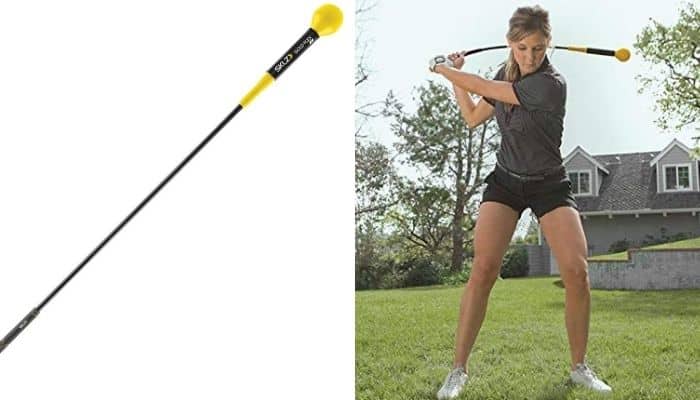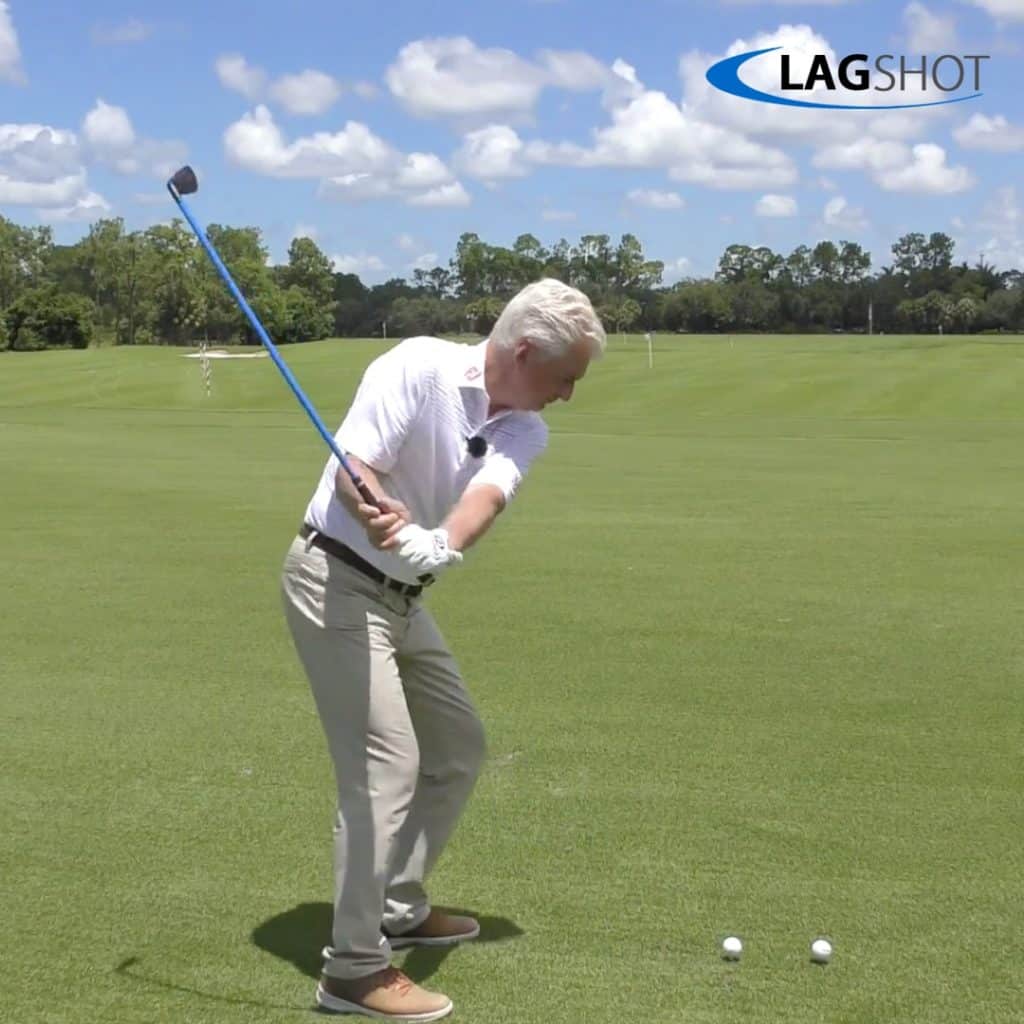If there’s one thing every golfer needs in their swing, it’s tempo.
However, tempo in golf is often misunderstood – most people think it describes a long, smooth swing such as those by Fred Couples or John Daly, but that’s not always the case.
While a lot of people say you should try and apply the 3 to 1 rule – where your backswing takes three times as long to complete as your downswing – there are many professional golfers who break this mould.
Japanese superstar Hideki Matsuyama is known for his deliberate, slow takeaway and pause at the top of his swing – which could be considered bad tempo – yet he is a Masters champion.
Likewise, American and multiple major winner Collin Morikawa also has an unhurried takeaway, before moving aggressively through the ball in the downswing.
So then, what is the correct tempo you should be aiming for in golf? The answer: one that feels most comfortable for you, and can be repeated over and over again.
In this article, I’ll explain everything you need to know about tempo – and unpack some of the common myths – to help you start striking the ball flush, time and time again.
Table of contents
What is swing tempo in golf?
Tempo in the golf swing describes how fast a player swings the club. Some players will, naturally, have a quicker tempo from the beginning to end of their swing, while others will have a slower one. Ideally, you should swing with a tempo that is easily repeatable for optimal consistency.
Many golf instructors will tell you that your tempo needs to be smooth and fluent, and while they are correct in many cases, it’s not always a one-size-fits-all solution to becoming a better ball-striker.
Personally, I’ve always had a slower backswing, before moving aggressively into my downswing – in a similar manner to Collin Morikawa (without the major-winning consistency or power, of course).
When I was regularly getting golf lessons, I had one instructor try and stop me doing that – and no matter how many weeks I worked on it, I never felt comfortable and my ball-striking severely suffered because of it.
My natural body movements favoured a slower takeaway and faster downswing, and if you’re someone who does similar, I’d encourage you not to change it – I’ve since worked with instructors who see no problem with my tempo and haven’t tried to alter it.
I’ve written another article on how the golf swing should feel from start to finish, which I also definitely recommend you read.
How important is tempo in the golf swing?
Swing tempo in golf is extremely important. A repeatable tempo will lead to greater consistency and improved ballstriking which, in turn, will lead to lower scores. If you can develop a rhythmic tempo, you’re well on your way to becoming a great golfer.
If your tempo changes each time you swing the golf club, it’s going to be extremely difficult to produce consistent results on the course, largely because your quality of strike will vary with each stroke.
The best players in the world are like metronomes in that the speed and tempo of their swing barely changes from shot to shot.
When they do hit a bad one, you’ll often hear the TV commentators say the player was either “too fast” through the ball, or that “they got stuck” as a result of a poor tempo, out-of-sync swing.
One thing that separates the professional golfers from the weekend warriors is the use of a pre-shot routine.
The elite golfers will go through the exact same steps before they hit every shot – including the same number of practice swings, or lining up their target – whereas amateurs, especially the high handicappers, will often just walk up and hit the ball without much thought.
If you can develop a repeatable pre-shot routine, you’re well on the way to developing a consistent tempo in your swing as you’re less likely to speed up or slow down, or change things, when faced with a pressure shot.
What is the ideal tempo for a golf swing?
The ideal golf swing tempo is one that you can repeat consistently, regardless of whether it is fast or slow. Tempo is individual to each golfer – some will swing the club faster or slower than others – and it’s important you focus on what feels comfortable and natural. This will produce the best results.
Often, when focusing on tempo, amateur golfers will think they need to swing the club slower, however this is mistaken.
How many times have you hit a bad shot, only for your playing partner to say “you’re swinging too fast”?
Given the players on the professional tours swing the club anywhere up to 130mph on the course, I can guarantee swinging fast does not prevent good tempo.
Usually, poor tempo is brought about by your body movements not working in sync – your lower body and hips might fire at the wrong time, or not at all; sometimes, you may rip the club down too fast from the top of your backswing.
The best way to generate a smooth, comfortable tempo that suits your game is by letting the club feel as if it drops behind you before starting your downswing – creating lag – which will help it shallow, fall into the slot and produce effortless power.
How do you create a good swing tempo in golf?
A good golf tempo is created by letting the club drop behind you and shallow in the backswing – otherwise known as ‘creating lag’. Focusing on this movement, rather than trying to steer the ball, will generate a flowing, effortless swing through the ball that encourages great tempo.
Once you’ve mastered shallowing the club, creating a consistent tempo becomes a breeze because it removes all the jerky swing flaws such as flipping of hands, early extension or a sliding forward of the hips.
Each of these faults will prevent the body moving properly, leading to an inconsistent tempo.
Below, I’ve outlined some ways that you can practice shallowing the club, which in turn will help your swing tempo.
3 ways to create a smooth swing tempo in golf
The two-wedge warm up
This is the easiest, most cost-effective way to practice the feeling of lag, and good tempo, in your golf swing.
Before practicing on the range or playing a round, take two wedges from your bag – ideally a 56 and 60 degree – and hold them together in your hands.
Now, take some full but slower practice swings, feeling the weight of the clubhead drop down and release through the ball.
The clubs will feel heavy, but this is the idea of the drill – allowing the weight to guide the way will automatically shallow the club first, before you then turn and swing through the rest of the shot.
Do this 20 or so times before hitting any golf balls and you’ll be surprised how much your tempo improves during your range session or competition round.
The SKLZ Golf Swing Trainer
It’s likely you’ve seen the SKLZ Golf Swing Trainer advertised in various places online – its trademark orange colour is hard to miss – but this simple, yet affordable, training aid is brilliant for mastering lag and swing tempo.
The SKLZ trainer uses the exact same principles as the two-wedge drill, except is a lot easier to hold in your hands and use correctly.

The weighted ball at the end acts as the heavy clubhead and forces you to let the club shallow behind you before whipping it through the impact zone (where the golf ball would be).
If you’re someone who has a jerky tempo and tends to flip your hands at the ball, using the SKLZ trainer will dramatically improve your swing in a very short time – as the feeling you’ll get, in terms of how the club moves, will be completely different.
I can’t recommend this training aid enough if you’re serious about improving your tempo.
The Lag Shot set of clubs
One of the best ways to train lag and tempo on the range or course – and actually hit balls while doing it – is by using the Lag Shot Golf Swing Trainer.
Unlike the two wedge drill or SKLZ Golf Swing Trainer, which both involve practicing your swing without actually striking any balls, the Lag Shot allows you to play proper shots while focusing on improving your tempo.
These clubs are designed with a blue, pliable shaft that bend far more than a normal club – what this means is that in order to strike the ball properly, you need a smooth, shallowed swing.

If you yank down too hard on the grip from the top of the backswing, it’s nearly impossible to make good contact when using the Lag Shot – which comes in either wedge, 7 iron or driver.
The only way to make good, consistent contact is to let the clubhead drop behind you at the start of the downswing and turn with a fluent, smooth motion with a nice tempo.
While the Lag Shot is a little pricier than other training aids, it’s well worth the money if you can afford it as it will do wonders for improving your tempo and lag.
What is a 3 to 1 golf swing tempo?
A 3 to 1 golf swing tempo is when your backswing takes three times as long as your downswing to complete. This is viewed by many as the optimal tempo. Given the average backswing takes 0.75 seconds to complete and the downswing only 0.25 seconds, this makes the most sense.
Applying this method to your golf swing has lots of merit because it’s based on ratios, rather than swing speed.
Regardless of how fast you swing the club, you can still work on a 3 to 1 backswing to downswing ratio – and one of the easiest ways to do it is simply to count ‘one, two’ as you take the club away, and start your downswing on ‘three’.
While this may not work for every golfer (Hideki Matsuyama, as I mentioned earlier, is an anomaly), it’s a great place to start for beginner or intermediate golfers who are struggling to develop a consistent tempo in their swing.
Next time you’re practicing at the range, or at home on a hitting net, try counting in your head as you swing the club and you’ll be surprised at how much it can help.
Final message
While golfers differ in how fast or slow they swing the club, all the best players in the world have one thing in common – a consistent, repeatable tempo.
Becoming a great golfer is all about removing as many variables as possible, and generating the same tempo in your swing time and time again is critically important when it comes to ball-striking.
If you try some of the drills and swing aids I’ve mentioned in this article, I can assure you will see improvements in your swing tempo (which will hopefully have a positive impact on your scores).


